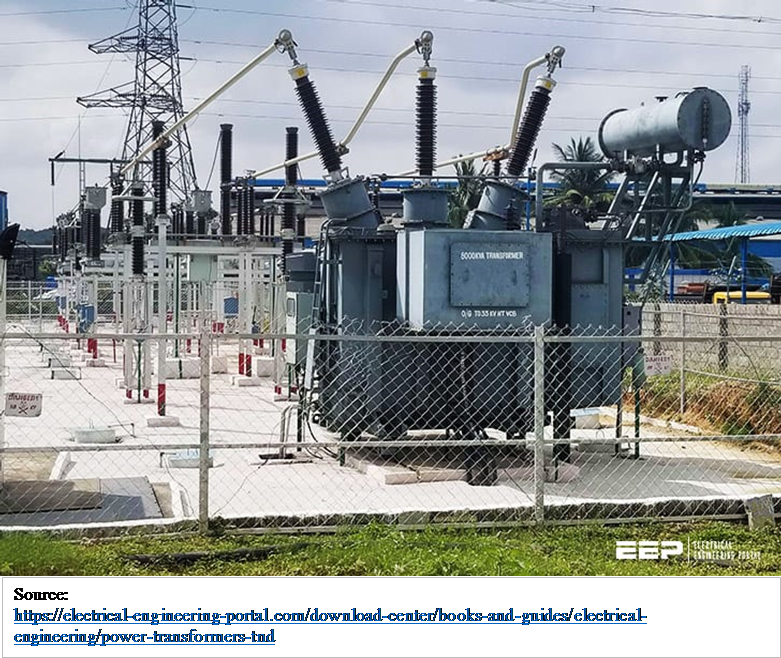Potential for grid efficiency based on a combination of leakage reactances of transformers of a transmission interconnecting line: Application of an exhaustive search algorithm
DOI:
https://doi.org/10.17159/2413-3051/2019/v30i4a6044Keywords:
active power system losses, energy efficiency, exhaustive search, leakage reactance, net present value (NPV).Abstract
Transmission interconnecting lines (called interconnectors in this study) are built to facilitate the exchange of active and reactive power between two areas of a network. Step-up and step-down transformers are required at the ends of the interconnector when interconnectors are at a different voltage, usually higher, than the networks to be connected. A study was carried out to examine the impact on active power losses of a combination of leakage reactances of the transformers at the ends of an interconnector. The study assessed whether combinations can lead to different levels of active power losses and can thus affect the efficiency of the system. It was found that the combinations of reactance have a tangible impact on the power that flows through the interconnector and, consequently, on the sharing of apparent power between the interconnector and the rest of the network. The total active power losses varied appreciably with the various combinations of reactances, resulting in the life-cycle cost of active power losses also varying with the combinations. The study showed that the combination needs to be carefully made, considering that such a choice can have a significant impact on techno-economic aspects of the power system.
Downloads
References
Anderson, A.R. and Mason, M.S. 1911. Leakage reactance of transformers. BSc thesis, University of Illinois, USA.
Bocovich, M., Iyer, K., Terhaar, R.M. and Mohan, N. 2013. Overview of series connected flexible AC transmission systems (FACTS). North American Power Symposium (NAPS), 2013, Manhattan, USA,1–6.
Brute Force Search. [Online]. 2018. Available: https://en.wikipedia.org/wiki/Brute-force_search. Accessed: 14 August 2018.
Comesana, P.F., Gandoy, J.D., Dorado, E.D. and Baeza, D.A. 2009. Evolutive algorithm to optimize the power flow in a network using series compensators. Compatibility and Power Electronics (CPE), 2009, Badajoz, Spain, 43–47.
Dawood, K., Alboyaci, B., Cinar, M.A. and Sonmez, O. 2017. A new method for the calculation of leakage reactance in power transformer. Journal of Electrical Engineering and Technology 12(5): 1883–1890.
EPA: Greenhouse gas emissions, Overview of greenhouse gases. 2016. [Online]. Available: https://www.epa.gov/ghgemissions/overview-greenhouse-gases. Accessed: 3 November 2018.
Forsten, K. 2010. Transmission efficiency initiative: Contributing to a lower carbon future. IEEE PES Transmission and Distribution Conference and Exposition, Sao Paulo, Brazil, 8-10 November 2010: 1–6.
Hamzaoglu, F. and Makram, E.B. 1999. Minimization of series reactive power loss for the voltage instability problems. Electric Power System Research 50(3): 175–181.
Hridya, K.R., Mini, V., Visakhan, R. and Kurian, A.A. 2015. Analysis of voltage stability enhancement of a grid and loss reduction using series FACTS controllers. IEEE International Conference on Power, Instrumentation, Control and Computing (PICC), 2015, Thrissur, India, 1–5.
IPCC, Climate Change. 2015. Mitigation of climate change. [Online]. Available: https://www.ipcc.ch/pdf/assessment-report/ar5/wg3/ipcc_wg3_ar5_technical-summary.pdf. Accessed: 3 November 2018.
IPCC, Climate Change. 2014. The synthesis report. [Online]. Available: http://www.ipcc.ch/pdf/assessment-report/ar5/syr/AR5_SYR_FINAL_SPM.pdf. Accessed: 3 November 2018.
Kundur, P. 1994. Power system stability and control. Electric Power Research Institute, California: McGraw-Hill, 633–637.
Mbuli, N. and Pretorius, J.H.C. 2013. Consideration of series compensation in the enhancement of techno-economic worth of higher voltage transmission line overlay. International Review of Electrical Engineering 8(4): 1379–1388.
Nielsen, F. 2009. Undergraduate Topics in Computer Science: A Concise and Practical Introduction to Programming Algorithms in Java. London, UK: Springer-Verlag Limited.
Odjugo, P.A.O. 2010. General overview of climate change impacts in Nigeria. Journal of Human Ecology 29(1): 47–55.
PSS/E. 2007. Power System Simulator for Engineering: Online Documentation: Ver. 32, Siemens Energy, Inc. Corporate Finance, Economic Evaluation Parameters, 2006-2010, April 2006.
Python 3.4.9rc1 Documentation. 2018. [Online]. Available: https://docs.python.org/3.4/. Accessed: 1 August 2018.
Python Programming Language. 2018. [Online]. Available: https://en.wikipedia.org/wiki/Python_(programming_language). Accessed: 20 November 2018.
Roy, P.K., Goshal, S.P. and Thakur, S.S. 2011. Optimal reactive power dispatch considering flexible AC transmission system devices using biogeography-based optimization. Electric Power Components and Systems 39(8): 733–750.
Torizuka, T. and Tanaka, H. 1998. An outline of power system technologies in Japan. Electric Power Systems Research 44(1): 1–5.
United Nations Framework Convention on Climate Change (UNFCCC). 1992. [Online]. Available: https://unfccc.int/resource/docs/convkp/conveng.pdf. Accessed: 3 November 2018
United Nations Framework Convention on Climate Change (UNFCCC). 2015. The adoption of the Paris agreement. [Online]. Available: https://unfccc.int/resource/docs/2015/cop21/eng/l09.pdf. Accessed: 3 November 2018.
Zhang, X., Tomsovic, K. and Dimitrovski, A. 2018. Optimal allocation of series FACTS devices in large-scale systems. IET Generation Transmission & Distribution 12(8): 1889–1896.

Downloads
Published
Issue
Section
License
Copyright (c) 2019 N. Mbuli, A. Dyantyi, J.H.C. Pretorius

This work is licensed under a Creative Commons Attribution-ShareAlike 4.0 International License.



.png)